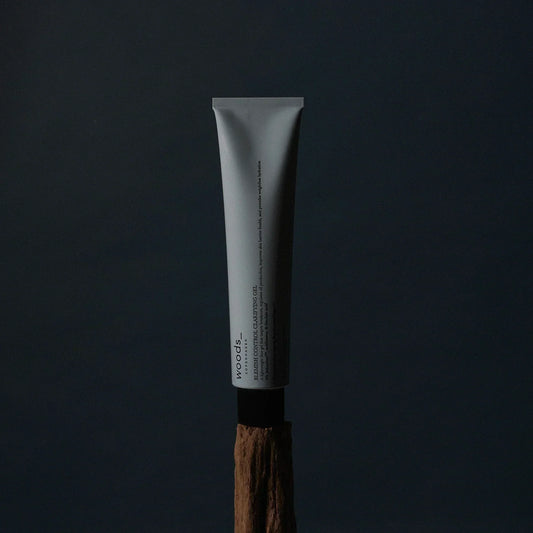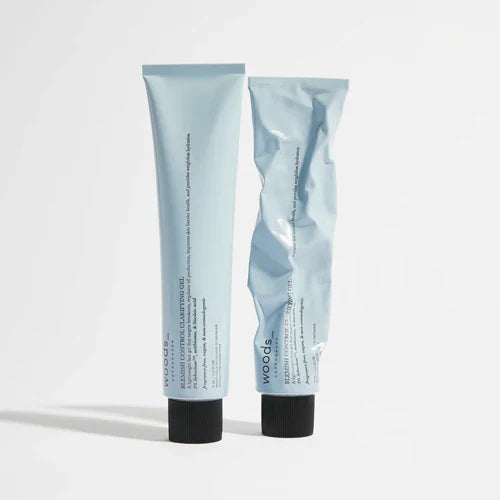So, is a product necessarily better, if the ingredient percentage is higher? Do the same rules count for your face and body? And can enriching ingredients ever be harmful? We’re exploring these questions and much more in this blogpost on everything you need to know about skincare percentages.
Quality over quantity - yes, in skincare as well
When it comes to skincare, there’re several occasions where the relevance of the saying “less is more” is resurrected. Did you, for example, know that the concentration of a specific ingredient can determine how it performs on the skin – both positively and negatively?
We’ve highlighted some examples of ingredients where it can make perfect sense to do a double take on the percentage-indication applied.
Niacinamide
A valued ingredient due to its versatile properties. What’s special about niacinamide is also that it can offer the skin varying effects, depending on the concentration it’s applied in. While as little as 0,5% can enhance a healthy glow, 2% is needed to strengthen the skin’s balance and barrier. Finally, 4-5% niacinamide has been shown to provide the ingredient with brightening properties, which can effectively help even out discolorations in the skin to enhance a smooth-looking surface.
Though niacinamide is praised among skincare enthusiasts due to its amazing abilities, it’s not a “the more the better” type of ingredient. We recommend that you opt out on products with a concentration above 5% niacinamide, as these can lead to irritations, redness, and even imbalances in the skin – thereby defeating the purpose of reaching for niacinamide in the first place. Products with a higher percentage of niacinamide therefore aren’t necessarily the better choice.
Unlock the enriching benefits of niacinamide on your own skin with our Niacinamide Lifting Mist and Niacinamide Repair Body Lotion both containing 5% niacinamide.
Vitamin A
Vitamin A possesses numerous proven benefits, among these the abilities to minimize and prevent premature signs of aging, encourage the skin’s natural collagen production, as well as balance the skin’s oil production. It’s therefore an enriching ingredient to many skin types – but as with everything else, its benefits should be enjoyed in moderation, as an excessive amount of vitamin A can lead to both skin and health related issues such as dryness, redness, itchiness, as well as headaches and other uncomfortable reactions.
For reference, official rules regarding content of vitamin A in cosmetics have been established in the EU, where the maximum content of vitamin A for safety approvals is 0,3% in facial products and 0,05% for the body.
Bring the optimizing effects of vitamin A to your complexion with our Vitamin A Treatment Cream containing 0,3% vitamin A.
Beta Hydroxy Acid (BHA)
Beta Hydroxy Acid, or BHA, is an acknowledged, oil-soluble exfoliant that effectively rids the skin of dead skin cells, build-up, excess oil, and bacteria. The amount of BHA used can vary depending on the product’s purpose, but it’s generally recommended that the concentration doesn’t exceed 2% to avoid irritating the skin.
As BHA is very active, and therefore also very effective, you should always introduce BHA-content products to your skin slowly and steadily. If you, for example, wish to experience the refreshing and rejuvenating effects of our Skin Perfector 2% BHA, we recommend that you start by applying the product every other day and thereby let the skin build tolerance gradually.
Indulge your skin with the deeply cleansing properties of BHA with our Skin Perfector 2% BHA containing 2% BHA or our Deep Cleansing Mask with 0,2% BHA. 
Body and face - is there a difference?
The short answer: Yes.
Because your body constitutes a larger surface than your face, you’ll automatically use more product on your body, and it’ll therefore ultimately absorb a higher concentration of the ingredients than your facial area is able to. For this reason, a lower percentage of specific ingredients are recommended in body care than facial products – simply to avoid the ingredient building up in the skin, overwhelming it, and thereby causing negative effects.
In other words: Percentages in skincare are never random and they always matter. They have essential influence on the product’s ability to perform its magic as well as the effects, the product will leave on your skin.
Want to learn more? Don’t hesitate to drop us a message if you’re curious about a specific ingredient and how it can affect (read: enrich!) your skin – if used correctly.
Your skin is unique - so, treat it as one of a kind
In conclusion: What concentration you should opt for depends on varying factors, e.g.: The remaining ingredients, your skin and its needs, the skin concern you wish to treat, as well as the specific ingredient itself. As ingredients, our skin types are different, and it’s therefore essential that you take your skin’s sensitivity into account when choosing your products. This way, you ensure that your products solely enrich your skin while avoiding uncomfortable (and unnecessary!) consequences.
More posts
-
Adult acne: from cause to treatment
While many associate acne and blemishes with the turbulent teenage years, the reality is that many adults continue to grapple with breakouts well into their 20s, 30s, and beyond. But...
Read more -
Skincare for teens: a step-by-step guide
Navigating skincare as a teenager (or honestly, just as much as an adult) can feel like a maze. In this digital age, we’re constantly flooded with the newest trends and...
Read more -
Introducing: blemish control clarifying gel
Breakouts are one of the most common skin concerns, affecting people of all ages and skin types. And when it comes to treating blemishes, striking the perfect balance can be...
Read more
- Choosing a selection results in a full page refresh.
- Opens in a new window.



